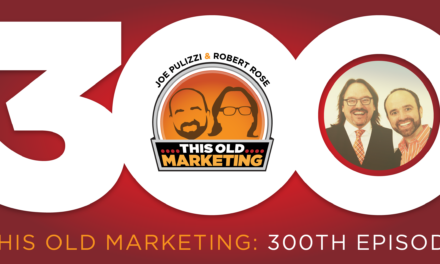Personalization is at the heart of digital experiences. But broadcast television has been inherently less personal. Every click of a mouse (or touchpad) leaves data about users in its wake, but that hasn’t been true for more traditional media. However, the expectations of digital consumers—and marketers used to targeting very specific audiences on the web—are impacting how TV networks look at their advertising.
With changing expectations in mind, telecom giants are taking notice. In January, a press release announced that “Just a little more than six months after coming together under the AT&T umbrella, WarnerMedia’s Turner and AT&T’s advertising business Xandr are working together to improve the relevancy of advertising, fueled by data and content connections.” The partnership relies on AT&T’s first-party set-top-box data—which goes beyond usual demographic information and can tell you what shows are being watched and which ads are being skipped—to inform Xandr’s capabilities. As such, AT&T’s consumer insights across TV, mobile, and broadband help advertisers get more granular in reaching audiences and provide marketers with important insights about viewership habits and content consumption. This helps expand the reach of branded storytelling to addressable TV, allowing advertisers to serve more relevant ads directly to the right audiences—and only that audience—regardless of programming or time of day (in both live and playback mode) via the set-top box. Furthermore, it proves the impact of advertising through attribution.
Meanwhile, Turner invested in AudienceNOW. According to a press release, AudienceNOW is “a data-powered solution that enables its advertising customers to more precisely distribute brand messaging to fans on its premium content networks” such as CNN, TBS, TNT, truTV, Cartoon Network, and Adult Swim. AudienceNOW already allowed advertisers to move beyond age and gender demographics, reaching audiences using different datasets. Now AudienceNOW can access valuable viewership insights from more than 40 million set-top boxes via Xandr. This enables advertisers to interpret campaign results in weeks instead of months. Advertisers can also reach the correct audience via Turner’s audience intelligence practice, Launchpad, in which placements are where improved consumer data aids efficient placements.
According to Matt Van Houten, VP of product development at Xandr Media, “The challenges in the TV advertising space are fragmented viewing due to democratization of access to devices and content, and archaic technology with traditional TV, which is not fast or targeted enough nor provides personalized reach. Xandr provides new technology that efficiently reaches consumers throughout the day and across all devices, and gives marketers more control for relevant, personalized messaging for brands to connect with consumers. Its new ad formats increase engagement, it uses data to reach viewers more effectively, and uses attribution analytics to provide marketers with actionable insights.”
To understand the expectations of digital consumers, Xandr surveyed more than 3,000 participants on how they’re interacting with content and what they do and don’t like about advertisements. They found that time and attention were vital—68% of respondents said they spend their free time engaging with content in between work and other daily commitments. But with growing content proliferation and a limited amount of time to consume it all, data and technology are critical to reaching consumers with the right message in the right context on the right channel.
“One way that broadcast media can improve ad relevance is by enabling audience-based buying,” says Kelly Abcarian, SVP of product leadership at Nielsen, a leading global provider of information and insights into what consumers watch and buy. “Our media clients use our Nielsen Advance Audience suite, especially the Nielsen Marketing Cloud, to analyze their audiences and create advanced audience media campaigns that go beyond traditional age and gender definitions to leverage behavioral, attitudinal, and lifestyle-based data.”
These capabilities give advertisers the ability to target highly specific custom audience segments. Nielsen’s AI-powered solutions provide segmentation and modeling capabilities, which optimizes audiences based on real-time data across multiple channels. “This means the audience segments are constantly refreshed to ensure advertisements are always delivered to the audiences who are more likely to engage and convert,” she adds.
“In the context of TV, it is important that advertisements are not seen as intrusive or disruptive to the viewing experience,” shares Tom Kelleher, professor and chair of the department of advertising at the College of Journalism and Communications at the University of Florida. “Ad intrusiveness affects attitudes toward the ad and the brand that eventually affects purchase intention. But there can also be ad avoidance and there are a lot of ways to do that now, including subscribing to services that allow you to skip advertisements entirely.”
There is a lot of data available on viewing habits and browsing history; there are third-party sites and databases, Kelleher points out, that make targeted personalization possible. Abcarian agrees: “Today’s vast amount of first- and third-party data, demographic data, and buyergraphic insights is driving the change across the TV ecosystem. With the wealth of data available, demonstrating a direct correlation between a marketing campaign and sales lift is not an impossible task.” Marketers now use Big Data to generate results in real time to have a more granular view of consumer habits and deliver more relevant advertising.
“Marketers often painted in broad brush strokes and grouped people with many unique attributes under a single segment like ‘males age 18–34.’ Techniques like data-driven, linear, and addressable TV have improved the precision of marketers’ campaigns by allowing greater personalization and relevancy in advertisements, which helps drive performance for advertisers, and a better overall experience for the consumer,” Van Houten says.
“The Nielsen Total Audience Report” from 2018 states that adults are spending almost 10.5 hours a day connected to media, and TV remains the top choice to view video. TV reaches nearly 90% of adults each week, making it one of the most effective ways to advertise on and build brand awareness. “Consumers continue to make choices on what works best for them in regards to devices and content,” says Abcarian. “But it all starts with great creative that helps build branding campaigns that resonate with consumers and moves them on an instinctive level. Having an end-to-end planning, activation, and analyzing set of solutions that talk to each other offers advertisers the ability to seamlessly activate advanced audiences across linear, digital, and emerging forms of TV, such as over-the-top (OTT).”
As Kelleher observes, “TV is still very much mass communication. Part of the trade-off for brands is that you get the scale and scope with TV to reach a ton of people in different demographic groups, and though the conversion funnel is harder to track, TV isn’t going away. People still pay attention to it.”






